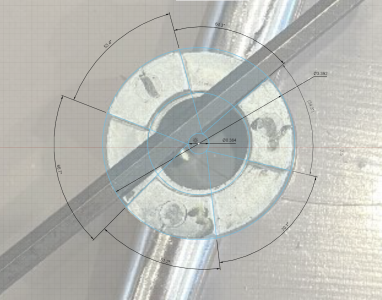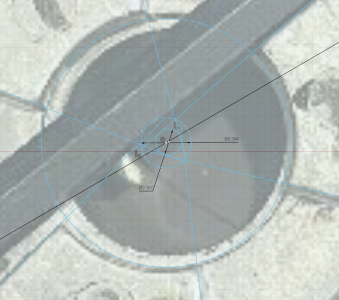@Ischgl99
May I ask you to do one more experiment?
Please extent all six angle lines to approximately (or a little past) the center of the central hole.
That will define a central (approximate) polygon.
Then add a central circle that best fits (most tangents) the polygon.
The radius of that circle is (approximately) the offset I spoke of.
The easy way to verify symmetry of the features in question is to ask
@want2drive whether or not the handle(s) will mate (index) at any of the three 120° options. If the handle indexes at only one then the symmetry is ruled out. If the handle indexes properly at three rotational options, then symmetry will have been sufficiently proven to be the case.


